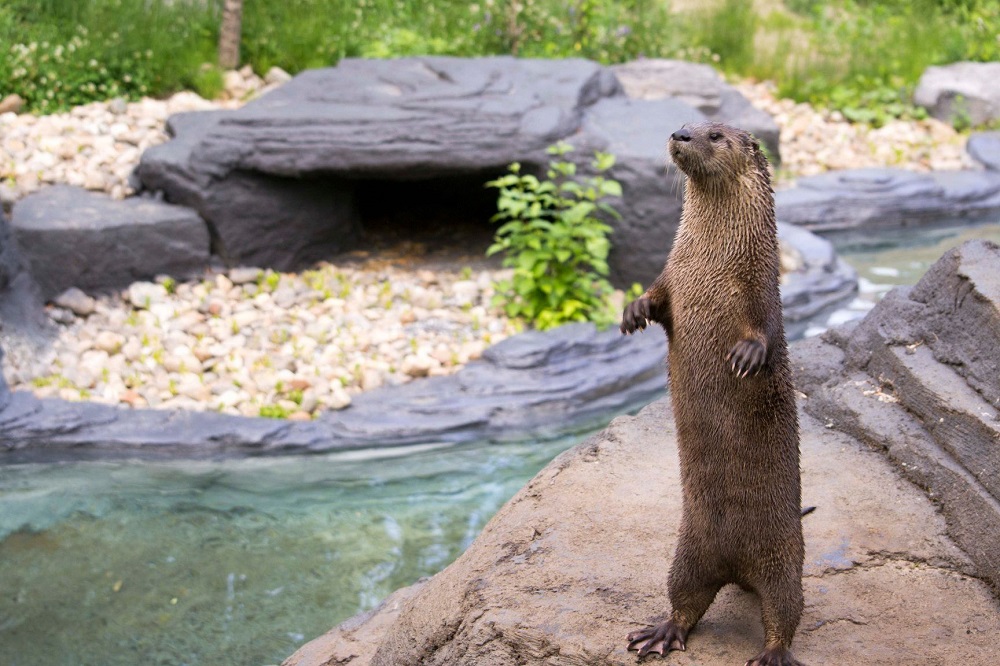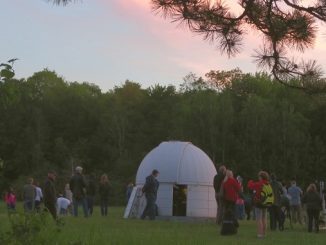Dr. Nathalie Jreidini, the Director of Education at the Ecomuseum Zoo, speaks passionately about the organization’s mission to protect Quebec’s wildlife and foster environmental education. The Ecomuseum Zoo, a non-profit operated by the St. Lawrence Valley Natural History Society (SLVNHS), is Montreal’s only outdoor zoo, dedicated to showcasing the region’s native animals in their natural habitats. Founded in 1988, the zoo’s focus has been on animal well-being, wildlife conservation, and environmental education.

Describe your charity/non-profit/volunteer work in a few sentences.
The Ecomuseum Zoo is a non-profit organization operated by the St. Lawrence Valley Natural History Society (SLVNHS). It is the only outdoor zoo on the island of Montreal and showcases Quebec’s wildlife in a natural setting. Its impactful mission rests on three guiding principles: animal well-being, environmental education, and the conservation of wildlife and its habitats.
Situated on an 11.3-hectare site once recognized as a vital wetland—yet regrettably used as a dumping ground during the westward extension of Highway 40 in the early 1960s—the Ecomuseum Zoo has remained steadfast in its efforts to restore the land to its original beauty. Since its opening in 1988, the Ecomuseum Zoo has dedicated itself exclusively to the natural heritage of Quebec and continues to do so today.
It is recognized by the Ministère de la Culture et des Communications (MCC) as well as the Société des musées du Québec as a museum institution with a scientific and technological vocation. It is also accredited by Canada’s Accredited Zoos and Aquariums (CAZA-AZAC).
What problem does it aim to solve?
The Ecomuseum Zoo’s mission focuses on animal well-being, environmental education, as well as the conservation of species and their habitats in the wild, all while focusing on Quebec’s biodiversity to encourage the appreciation and preservation of the natural world that surrounds us. As such, it operates concretely through education and public engagement, especially with youth, fostering a deeper connection with wildlife and nature while shedding light on the intricate relationships that link humans, wildlife, and the health of our shared environment. Through dedicated scientific conservation efforts in the field, the Ecomuseum Zoo tirelessly advances knowledge of the province’s wildlife, transforming insights into actionable measures for its protection and the preservation of its habitats.
When did you start/join it?
In 1981, esteemed McGill University professor Dr. John Roger Bider established the St. Lawrence Valley Natural History Society (SLVNHS). Believing in a society where people respect and protect nature, he sought to inspire future generations.
In 1988, he brought his vision to life by opening the Ecomuseum Zoo, the heart of SLVNHS’s education, research, and conservation efforts. More than just a zoo, it has become a hub for fostering a deeper connection between people and the environment, ensuring Dr. Bider’s legacy lives on.
What made you want to get involved?
As a wildlife biologist with a passion for science communication and environmental education, I have been a supporter of the Ecomuseum Zoo and its mission since moving to Montreal for university (even briefly volunteering here during my undergraduate studies!).
My goal as a scientist and educator is to inspire curiosity, not only in the next generation of scientists but in individuals of all ages, by fostering an understanding of ecological stewardship that transcends career paths.
How has it changed since?
After opening its doors to the public in 1988, the Ecomuseum Zoo started offering its first educational programs on-site, then off-site on the road by the following year. In 1992, the first official pavilion was constructed to provide basic visitor services, some indoor small animal exhibits, and rooms for educational activities. Shortly after, the Ecomuseum Zoo was able to operate year-round and even welcome visitors in the winter, making it open to the public 364 days a year – only closing on December 25th.
The number of animals welcomed at the zoo, and consequently the number of outdoor exhibits has progressed substantially since then. In addition, the team grew from fewer than 10 employees in 2005, to over 25 employees by 2013, to over 70 employees in present day.
Continuous modernization and development within the organization, notably of its facilities, enabled it to sustain its momentum of growth and improvement of animal well-being practices and protocols, the refinement of its already highly effective educational program, and the unique customer experience it offers. Concrete conservation activities undertaken in natural environments across Quebec continue to expand in reach and scope, with the zoo’s research and conservation team now composed of 4 full-time biologists.
What more needs to be done?
The Ecomuseum Zoo’s past achievements stand as a testament to sustained growth, consistently advancing its mission and scope – a movement set to continue well into the future. Through ongoing self-evaluations of our practices and impact, and through submitting ourselves to stringent accreditation processes of national organizations, we strive to incessantly enhance the quality of animal care and our ability to monitor well-being predictors, refine the ways we measure the impact of animals on visitors, particularly through our education programs, and harness the invaluable knowledge gained from years of dedicated research and conservation efforts on Quebec’s biodiversity. This constant commitment ensures that our expertise remains both translatable and transferable, leading to impactful progress in animal care, wildlife conservation, and environmental stewardship.
Exciting discussions are currently underway for the potential extension of the Ecomuseum Zoo’s surface, which will allow for the expansion of its capacity to welcome animals in its care as well as visitors, and thus of its mission. Regardless of the outcome of these discussions, the mission’s scope will continue to evolve and expand over time.
How can our readers help?
Every visit to the Ecomuseum Zoo is an act of support, directly contributing to the fulfilment of its mission! Further options to contribute to the Zoo include one-time or monthly donations, as well as symbolic sponsorships through which you can directly contribute to the well-being of your favourite animal.
In addition, people interested in contributing to ongoing conservation initiatives and population monitoring projects carried out by the Ecomuseum Zoo research and conservation team can get involved in our citizen science program: the Atlas of Amphibians and Reptiles of Quebec (AARQ).
Do you have any events coming up?
In addition to being able to visit the Zoo and the animals in our care 364 days a year, we also offer themed activities for children and adults alike. These offerings evolve with the changing seasons and festive holidays to offer a fresh experience year-round!
Activities offering unique encounters with animals and hands-on educational experiences include:
- “Starlight Promenade: Frog calls and other nocturnal mysteries!”: an immersive evening activity happening once this year, on Saturday, April 26th, allowing participants to deepen their knowledge and go out to listen to and search for frogs, in addition to experiencing an exclusive after-hours guided tour to observe the mysterious nocturnal behaviours of certain animals in our care.
- “Breakfast for the animals”: offered on Saturdays and Sundays, the dates of which can be viewed on our online events calendar. Animals include: the Canada Lynx, Grey Wolves, Red Foxes and Arctic Foxes, Black Bear, and River Otters!
For more activities or to plan your next visit, check out our online events calendar:
Activities & Events | Ecomuseum Zoo
Where can we follow you?
You can stay up to date with our latest news and upcoming events on our website, Facebook, and Instagram!
PAY IT FORWARD: What is an awesome local charity that you love?
We continually collaborate with Le Nichoir, GRAME (Groupe de recherche appliquée en macroécologie), the Morgan Arboretum, the McGill Bird Observatory (MBO), and have common values with Les Amis de la Montagne, all of which are Montreal charities doing incredible work in environmental education.




